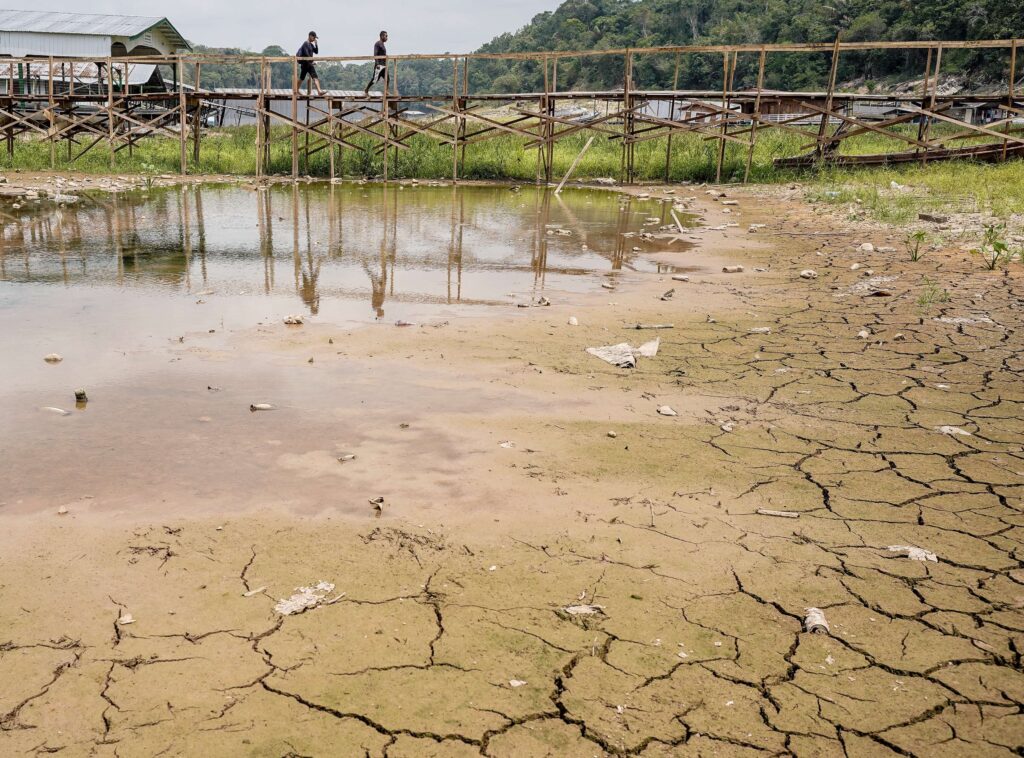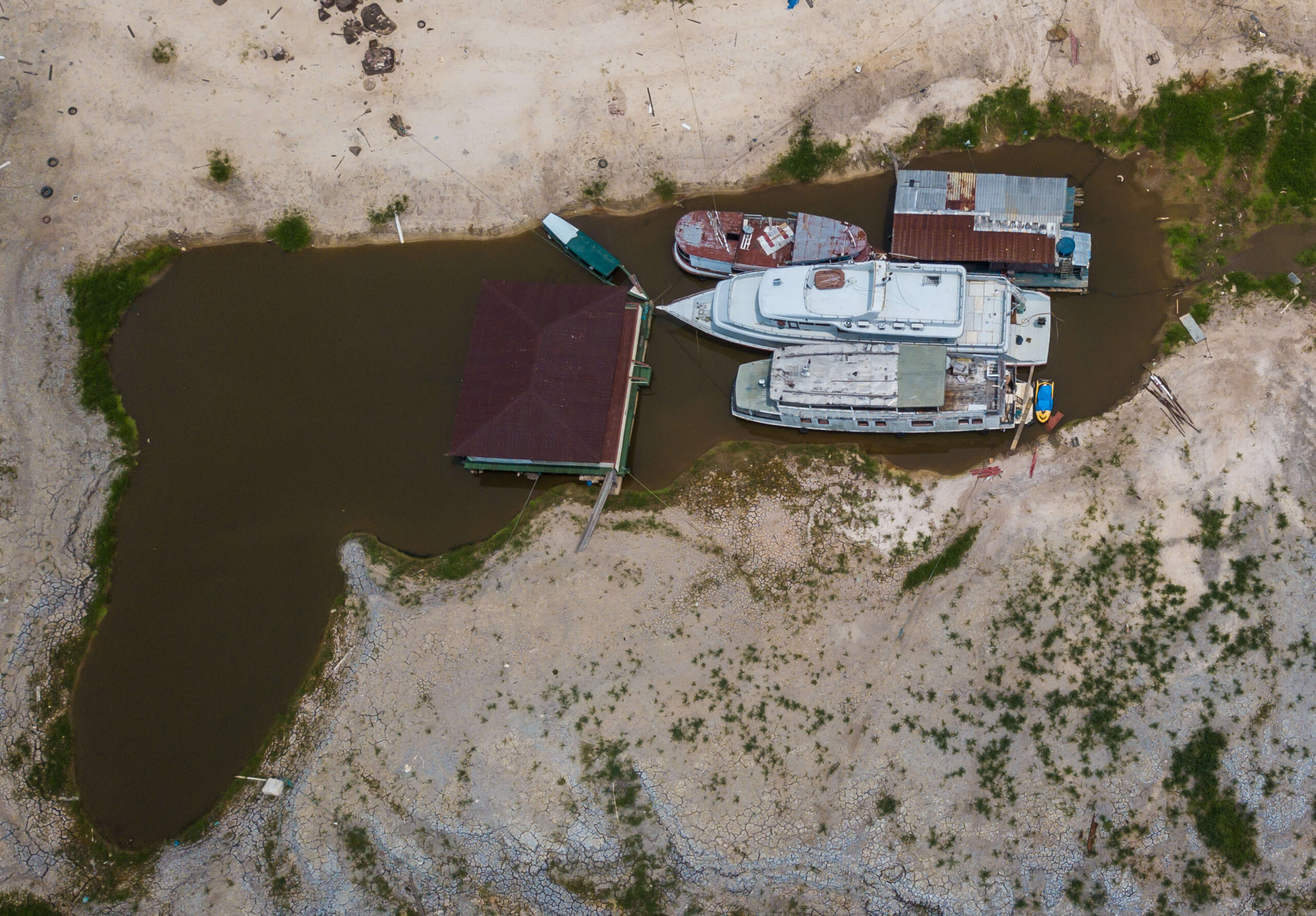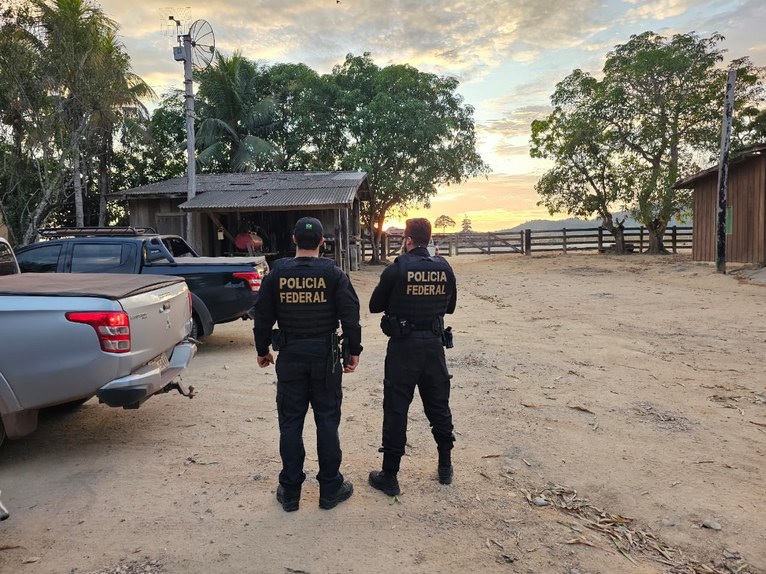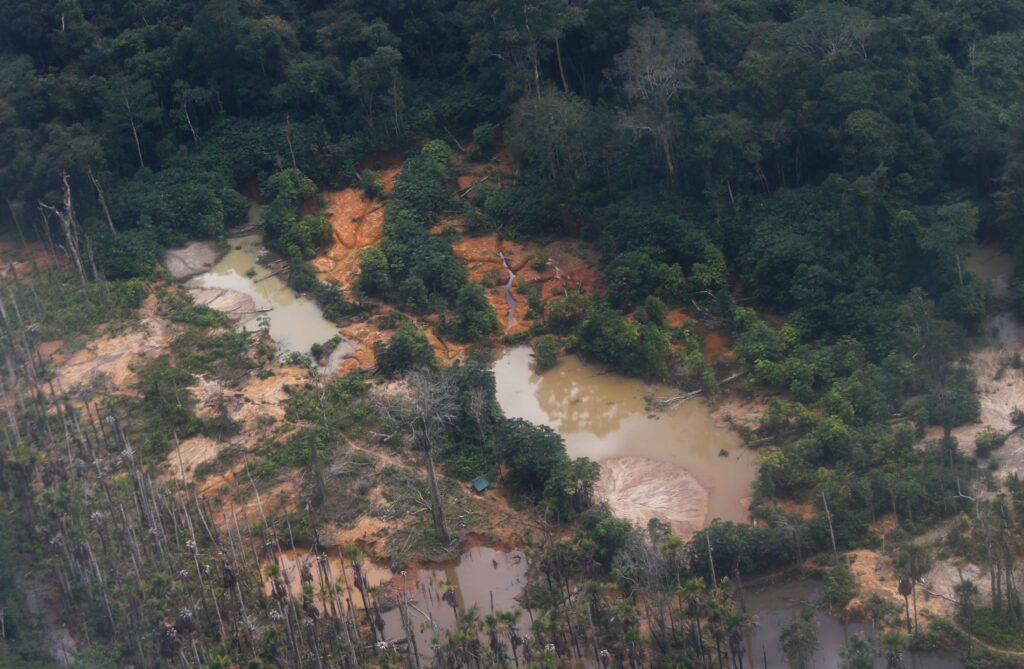São Paulo, Brazil – A study carried out by the European Commission’s Joint Research Centre (JRC) revealed that in 2023 the nine countries located in the Amazon basin recorded the lowest rainfall levels in 40 years. The extreme drought threatens plant and animal life as well as Indigenous communities in countries within the basin.
Data released by the research centre show that in the Brazilian portion of the Amazon, between August and November 2023, during the winter-spring season, temperatures reached a record 105.8 °F – about 35.6°F to 41°F above the historical average for the season.
The heat and extremely dry weather, as well as the lack of rain, have left a devastating scenario. The soil has dried up. There have been historic drops in river levels and, in some places, rivers have dried up completely, killing hundreds of river dolphins. In addition to meteorological factors, the availability of flammable materials, such as wood and dry garbage, has made it easier for forest fires to spread, spreading smoke and compromising air quality.

Environmental engineer Ayan Fleischmann leads the research group on geospatial analysis, environment, and Amazonian territory at the Mamirauá Institute for Sustainable Development, a research body linked to the Ministry of Science of the Brazilian government, located in the city of Tefé, in the Amazonas state.
Speaking to Brazil Reports, Fleischmann said that they already expected a severe drought this year due to El Niño, a phenomenon that causes the waters of the Pacific Ocean to warm up. But the situation in 2023 was also aggravated by the unexpected warming of part of the Atlantic Ocean.

“The warming of the Atlantic Ocean, which is another component of this drought, looks set to intensify with global warming,” he said. “This simply means that we need to come up with ways of adapting to mitigate the impacts of these extreme droughts caused by climate change, which will continue to occur over the next few years.”
Because of the climate situation, the government of Amazonas has had the state’s 62 cities under environmental emergency since November 2. In the state, rainfall has been between 100 and 350 millimeters below the annual average, registering around half of the expected volume.
Meteorologist Josélia Pegorim from the Climatempo Institute told Brazil Reports that the last month of heavy rainfall over most of Amazonas state was February. From March onwards, several parts of the area received less rain than the monthly average considered normal.


“The lack and irregularity of rainfall over the Amazon in recent months is probably associated with the great warming that has been observed in the tropical North Atlantic Ocean and also with the above-normal warming in the Gulf of Mexico region,” Pegorim explained.
According to the latest data released by state authorities on December 28, the crisis has already affected more than 599,000 people in Amazonas alone.
The European Commission’s Joint Research Centre listed the danger to animal life, the increased risk of fires and lower river levels, and challenging mobility in riverside communities as the main consequences of the severe drought of 2023.











